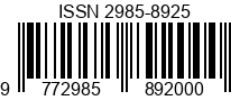Penggunaan Arificial Intelegent dalam Pengerjaan Tugas Kuliah Mahasiswa UINSA (Analisis Teori Tindakan Rasional Max Weber)
DOI:
https://doi.org/10.54298/tarunalaw.v2i02.197Keywords:
Keywords: Artificial Intelligence, Learnings, Rational actions.Abstract
Abstract
Artificial Intelligence (AI) is a system that is developed and continues to innovate deeply fields of study that are created either on machines or computers that have the same intelligence or even more like humans. Artificial Intelligence (AI) technology is often used, not only one or two Artificial Intelligence (AI) platforms have been created by humans for makes human work easier. However, Artificial Intelligence (AI) has various types where each platform has different uses and functions, the author this time wants describes the platforms that students often use for survival universities according to a survey that the author has carried out. Research methods used to find out this phenomenon is a qualitative descriptive research method with techniques collect questionnaire data by asking questions and can be answered directly by respondents according to their respective answers. Artificial Intelligence (AI) has potential play an important role in supporting students with learning disabilities and helping them reach their maximum potential. For the emotional plane students, the use of Artificial Intelligence (AI) technology can help build feelings confident in learning outcomes, because human artificial intelligence technology can help learning in a pleasant and comfortable environment, thereby increasing the sense of self-confidence and reduce anxiety in learning. UINSA student use this intelligence tool to make work easier and save money their time. This human artificial intelligence technology also does not completely have it benefits for students, if we as students are aware of technological advances with the suitability of his actions regarding Max Weber's rational actions, for achieveing the actor’s dreams.
Abstrak
Artificial Intelligence (AI) merupakan sistem yang dikembangkan dan terus berinovasi dalam bidang studi yang yang dibuat baik pada mesin ataupun komputer yang memiliki kecerdasan sama atau bahkan lebih seperti manusia. Teknologi Artificial Intelligence (AI) sering digunakan, tidak hanya satu atau dua saja platform Artificial Intelligence (AI) yang diciptakan manusia untuk memudahkan pekerjaan manusia. Namun, Artificial Intelligence (AI) memiliki berbagai jenis yang setiap platform memiliki tata guna dan fungsi yang berbeda, penulis kali ini ingin menjabarkan platform-platform yang sering digunakan mahasiswa dalam keberlangsungan hidup universitas menurut survey yang sudah penulis laksanakan. Metode penelitian yang digunakan untuk mengetahui fenomena ini adalah metode penelitian deskriptif kualitatif dengan teknik pengumpulan data kuesioner dengan memberikan pertanyaan dan dapat dijawab langsung oleh responden sesuai dengan jawaban mereka masing-masing. Artificial Intelligence (AI) berpotensi memainkan peran penting dalam mendukung mahasiswa dengan ketidakmampuan belajar dan membantu mereka mencapai potensi maksimal mereka. Untuk bidang emosional mahasiswa, penggunaan teknologi Artificial Intelligence (AI) dapat membantu membangun rasa percaya diri dalam hasil belajar, karena teknologi kecerdasan buatan manusia dapat membantu pembelajaran dalam lingkungan yang menyenangkan dan nyaman, sehingga meningkatkan rasa percaya diri dan mengurangi kecemasan dalam belajar. Mahasiswa UINSA mempergunakan alat bantu kecerdasan ini untuk mempermudah pengerjaan serta menghemat waktu mereka.Upaya yang mereka lakukan telah dijelaskan oleh Max Weber sebagai bentuk dari tindakan rasional yang berorientasi, kepada cita-cita para pelaku.
Kata kunci: Artificial Intellegence, Pembelajaran, tindakan rasional
References
Firmansyah, Muhamad Trias, and Dhafin Salman. “MENJELAJAHI POTENSI ARTIFICIAL INTELLIGENCE (AI) DALAM MENINGKATKANKUALITAS PENDIDIKAN INDONESIA,” no. 6 (2024).
Hans, Rizal. “Mengenal Komponen Teknik Analisis Data Deskriptif Kualitatif.” Accessed June 6, 2024. https://dqlab.id/mengenal-komponen-teknik-analisis-data-deskriptif-kualitatif.
Kurniawan, Muhammad Akbar S, Nun Ainun Arap, Anry Irawan, and Nur Azizah. “Digitalisasi Pendidikan Berbasis Teknologi Abad 21 (AI, AR, VR, Iot, Blockchain, Drones, Gamification, Machine Learning, Robotics, 3D Printing)” 3, no. 3 (2023).
Muhammad Yahya, Wahyudi, and Akmal Hidayat. “Implementasi Artificial Intelligence (AI) di Bidang Pendidikan Kejuruan Pada Era Revolusi Industri 4.0.” SEMINAR NASIONAL DIES NATALIS 62 1 (July 29, 2023): 190–99. https://doi.org/10.59562/semnasdies.v1i1.794.
Oktavianus, Arnolus Juantri E., Lamhot Naibaho, and Djoys Anneke Rantung. “Pemanfaatan Artificial Intelligence pada Pembelajaran dan Asesmen di Era Digitalisasi.” JURNAL KRIDATAMA SAINS DAN TEKNOLOGI 5, no. 02 (December 2, 2023): 473–86. https://doi.org/10.53863/kst.v5i02.975.
Pakpahan, Roida. “ANALISA PENGARUH IMPLEMENTASI ARTIFICIAL INTELLIGENCE DALAM KEHIDUPAN MANUSIA,” 2021.
Rahman, M. Taufiq. Glosari Teori Sosial. 1. Bandung: Ibnu Sina Press, 2011.
Sahara, Sahara, Miftahul Ilmi, and Rudi Yanto Batara Silalahi. “Pendampingan Edukasi Cerdas Menyikapi Tren AI (Artifial Intelligence) dalam Dunia Pendidikan.” Jurnal Penelitian dan Pengabdian Masyarakat 1, no. 4 (November 19, 2023): 354–64. https://doi.org/10.61231/jp2m.v1i4.169.
Serdianus, Serdianus. “Quo Vadis Pendidikan Di Era Artificial Intelligence?,” September 6, 2023. https://doi.org/10.31219/osf.io/sf7hc.
Yuliani, Wiwin. “METODE PENELITIAN DESKRIPTIF KUALITATIF DALAM PERSPEKTIF BIMBINGAN DAN KONSELING.” Quanta Journal 2, no. 2 (February 1, 2018): 83–91. https://doi.org/10.22460/q.v2i2p83-91.1641.
Downloads
Published
How to Cite
Issue
Section
License
Copyright (c) 2024 Lintang Raditya

This work is licensed under a Creative Commons Attribution-ShareAlike 4.0 International License.
Authors who publish with this journal agree to the following terms:
- Authors retain copyright and grant the journal right of first publication with the work simultaneously licensed under a Creative Commons Attribution-ShareAlike that allows others to share the work with an acknowledgement of the work's authorship and initial publication in this journal.
- Authors are able to enter into separate, additional contractual arrangements for the non-exclusive distribution of the journal's published version of the work (e.g., post it to an institutional repository or publish it in a book), with an acknowledgement of its initial publication in this journal.
- Authors are permitted and encouraged to post their work online (e.g., in institutional repositories or on their website) prior to and during the submission process, as it can lead to productive exchanges, as well as earlier and greater citation of published work (See The Effect of Open Access).














